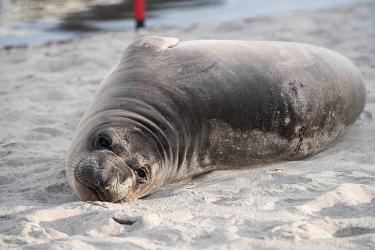Warm river habitats appear to play a larger-than-expected role in supporting the survival of cold-water fish, such as salmon and trout. This information was published today in a new study in the journal Nature Climate Change.
The research has important implications for fish conservation strategies. A common goal among scientists and policymakers is to identify and prioritize habitat for cold-water fish that remain suitably cool during the summer. This is especially important as the climate warms.
Potential Blind Spot
“Prioritizing cold-water habitat devalues seasonally warm areas, even if they are suitable for fish most of the year,” said Jonny Armstrong, lead author of the paper and an ecologist at Oregon State University. He called this a “potentially severe blind spot for climate change adaptation.”
A huge challenge for conservation is to figure out how to help these fish survive a warmer future. Typically, efforts focus on saving the coldest places, such as high mountain streams, which are already the most pristine parts of basins. This approach often neglects the places that are warm in summer, forgetting that these places are optimal for much of the year.
“We’re talking about a subtle shift in how we think about these thermal habitats,” said Aimee Fullerton, a fisheries biologist at NOAA’s Northwest Fisheries Science Center and a study co-author. “Of course, we want to protect the high-quality cold-water habitats. But we need to expand our definition of high-quality habitat to include some warmer waters.”
Fish Need Both Warm and Cold Waters
In the new paper, the researchers show those warm river habitats, typically lower in basins, provide pulses of growth potential during the spring and fall. These are the so-called shoulder seasons when the rivers are not at peak summer temperatures. Foraging in these warm habitats can provide fish the needed energy to travel to cooler parts of the river during the summer and to reproduce.
“The synergy between cold water and warm water is really important,” said Armstrong, an assistant professor in the Department of Fisheries and Wildlife in the College of Agricultural Sciences. “We’re not saying cold water is not important. We’re saying that warm portions of basins are also important because they grow fish during the shoulder seasons. Conserving this habitat is critical for unlocking the full potential of rivers to support fisheries.
Growth Models Using Temperature Data
The researchers used data from another team of NOAA scientists who used remote sensing technology to predict river water temperature data across entire landscapes throughout the year.
Using the landscape-scale water temperature predictions, Armstrong and his collaborators estimated fish growth potential throughout the year. They looked at a range of watersheds in the Columbia River basin. They developed fish growth potential from “bioenergetics models.” These are a standard set of equations derived from lab studies that researchers use to evaluate habitat quality for a huge diversity of fish species, in particular water temperature.
The simulations showed that the habitats that would be considered too warm during summer are the very ones where salmon can grow quite well during spring and fall.
“It’s not enough to protect only the habitats that are cold during summer, but that we also need to consider how fish use a range of habitats throughout the year,” said Fullerton.
The researchers noted that restoration and conservation activities that promote natural processes could help ensure diverse thermal habitats for salmon into the future.



